The Gumm Sisters on film, 1929-30 and 1935
___________________________________
page originally published on 15 February 2010; latest edit: 12 November 2022
___________________________________
Excerpts from the Wikipedia Judy Garland page:
 Judy Garland (born Frances Ethel Gumm; June 10, 1922 – June 22, 1969) was an American singer, actress, and vaudevillian. She was renowned for her contralto vocals and attained international stardom that continued throughout a career spanning more than 40 years as an actress in musical and dramatic roles, as a recording artist, and on concert stages.[1][2]
Judy Garland (born Frances Ethel Gumm; June 10, 1922 – June 22, 1969) was an American singer, actress, and vaudevillian. She was renowned for her contralto vocals and attained international stardom that continued throughout a career spanning more than 40 years as an actress in musical and dramatic roles, as a recording artist, and on concert stages.[1][2]
Garland was born Frances Ethel Gumm on June 10, 1922, in Grand Rapids, Minnesota. She was the youngest child of Ethel Marion (née Milne) and Francis Avent “Frank” Gumm. Her parents were vaudevillians who settled in Grand Rapids to run a movie theater that featured vaudeville acts. She was of Irish, English, and Scottish ancestry,[5][6] named after both of her parents and baptized at a local Episcopal church.[7]
“Baby” (as she was called by her parents and sisters)[8] shared her family’s flair for song and dance. Her first appearance came at the age of two-and-a-half, when she joined her older sisters Mary Jane “Suzy/Suzanne” Gumm and Dorothy Virginia “Jimmie” Gumm on the stage of her father’s movie theater during a Christmas show and sang a chorus of “Jingle Bells“.[9] The Gumm Sisters performed there for the next few years, accompanied by their mother on piano.[8]
The family relocated to Lancaster, California, in June 1926, following rumors that Frank Gumm had made sexual advances towards male ushers.[10] Frank purchased and operated another theater in Lancaster, and Ethel began managing her daughters and working to get them into motion pictures. Garland attended Hollywood High School and later graduated from University High School.[11]
 The Gumm Sisters
The Gumm Sisters
In 1928, The Gumm Sisters enrolled in a dance school run by Ethel Meglin, proprietress of the Meglin Kiddies dance troupe. The sisters appeared with the troupe at its annual Christmas show.[6] It was through the Meglin Kiddies that Garland and her sisters made their film debut, in a 1929 short subject called The Big Revue. This was followed by appearances in two Vitaphone shorts the following year, A Holiday in Storyland (featuring Garland’s first on-screen solo) and The Wedding of Jack and Jill. They next appeared together in Bubbles. The final on-screen appearance of The Gumm Sisters [billed as the Garland Sisters] came in 1935, in another short entitled La Fiesta de Santa Barbara.[7]
In 1934, the sisters, who by then had been touring the vaudeville circuit as “The Gumm Sisters” for many years, performed in Chicago at the Oriental Theater with George Jessel. He encouraged the group to choose a more appealing name after the name “Gumm” was met with laughter from the audience. “The Garland Sisters” was chosen, and Frances changed her name to “Judy” soon after, inspired by a popular Hoagy Carmichael song.[8]
Several stories persist regarding the origin of the name “Garland”. One is that it was originated by Jessel after Carole Lombard’s character Lily Garland in the film Twentieth Century which was then playing at the Oriental; another is that the trio chose the surname after drama critic Robert Garland.[9] Garland’s daughter Lorna Luft stated that her mother selected the name when Jessel announced that the trio of singers “looked prettier than a garland of flowers”.[10] Another variation surfaced when Jessel was a guest on Garland’s television show in 1963. He claimed that he had sent actress Judith Anderson a telegram containing the word “garland,” and it stuck in his mind.[11]
At any rate, by late 1934 the “Gumm Sisters” had changed their name to the “Garland Sisters.”[12] The trio was broken up in August 1935, however, when Suzanne Garland flew to Reno, Nevada, and married musician Lee Kahn, a member of the Jimmy Davis orchestra playing at Cal-Neva Lodge, Lake Tahoe.[13]
(above left) Baby Gumm c. 1929, and (right) 1930
Complete Gumm Sisters filmography from the Judy Garland Database. I’ve corrected the date given for The Wedding of Jack and Jill and Bubbles from 1929 to 1930 (they were each released in 1930). They were credited as “The Three Gumm Sisters” for each of the first four films.
1. The Big Revue – Meglin short subject, 1929
2. A Holiday in Storyland – Vitaphone short subject — dated 1929 by JGDb, April 1930 by IMDb
3. The Wedding of Jack and Jill – Vitaphone short subject, 1930
4. Bubbles – Vitaphone short subject, 1930
5. La Fiesta de Santa Barbara – MGM short subject, 1935 (as The Garland Sisters)
The Big Revue: The Gumm Sisters make their screen debut in the 1929 film The Big Revue, also known as Starlet Revue. Frances ‘Baby’ Gumm, later known as Judy Garland, is 7 years old.
That’s the Good Old Sunny South (Milton Ager, Jack Yellen)
Baby Gumm is the evidently the one making the repeated shouts of “Yes sir!” Not included in the following clip is the young girl that conducts the orchestra introducing the number as follows: “Now you will see…a…dancing and singing number…by the Gumm Sisters…not the Wrigley Sisters.”
.
That’s the Good Old Sunny South — lyric transcription
Don’t fly away, come along quick
South where the breezes blow
Leave this storm land
Come away to a warm land
Pack up, fly away, learn an old trick
All us wise guys know
Headin’ to the south you can’t miss it
Let me be explicit
When you see blue skies and fields of white
And the sun is shinin’ bright
Yes, sir! That’s the good old sunny South
When you hear that same old robin sing
That you heard up north in spring
Yes, sir! That’s the good old sunny South
Where your heart wants to play
And your feet want to dance
Where the close of each day
brings a night of romance
Where you meet those gals that sweetly drawl
“Mighty glad to meet you all”
Yes, sir! That’s the good old sunny South
My transcription differs slightly from that at lyricspond.com in that I hear line 6 as “All us wise guys know” rather than “All of the wise guys know,” and I’ve omitted the repetition of the last three lines at the end following an instrumental break. I’ve also eliminated punctuation at the end of lines as I nearly always do for lyrics and poems.
______________________
1930
A Holiday in Storyland — IMDb gives the release date of the film as April 1930, but the song Blue Butterfly sung by Frances Gumm was recorded in November 1929.
Blue Butterfly (Johnny Tucker, Joe Schuster) – copyright 20 December 1929
Frances “Baby” Gumm (age 7)– recorded in November 1929 in Burbank, CA*
This first video focuses on the vocal portion of the number from the film soundtrack, omitting the instrumental and tap portion that follows in the full number (second video).
.
(below) full number
.
 Blue butterfly
Blue butterfly
Smile and be cheery
Though you are weary now
Blue butterfly
Stop your high flying
Or it will fade your brow
Cheer up
The meadowlark sings
You still have beautiful wings
To fly with
Why can’t you try
Be happy
Blue butterfly
lyric transcribed by doc (Jim Radcliff), 2010; revised 4 October 2019
_________________
Where the Butterflies Kiss the Buttercups Good-night – sung by the Gumm Sisters
The provider of the following video seems to have given the wrong title. There is no soundtrack listing at IMDb. The title phrase is sung throughout the song as “Where the butterflies kiss the buttercups good-night.”A song of this title, with the same first line of the chorus, was written in 1929, music by Ed G. Nelson, lyrics by Harry Pease and Charles O’Flynn. It was performed by Paul Whiteman and his Orchestra during a radio broadcast of “The Old Gold Paul Whiteman Hour,” and recorded in 1929 separately by Mal Hallett and His Orchestra and by vocalist Bob Neilson, the latter with an arrangement by a 20 year old Archie Bleyer.
Sites which give the title as “When the Butterflies Kiss the Buttercups Goodbye” credit, I think incorrectly, N. Jerome and H. Berg as the songwriters. I’ve been unable to identify a songwriter named N. Jerome. M. K. Jerome, with Harold Berg, wrote “Bubbles”, the title song of a 1930 short film which featured the Gumm Sisters.
The idea of affection between butterflies and buttercups had at least one precedent in American popular song at the time this one was written. “Carolina in the Morning,” written in 1922 with music by Walter Donaldson and words by Gus Kahn, features the following lines:
Strolling with my girlie where the dew is pearly early in the morning
Butterflies all flutter up and kiss each little buttercup at dawning
_____________________
(above) still photo from the short film The Wedding of Jack and Jill (1930), featuring members of the cast in costume for the title number, with Frances “Baby” Gumm over the groom’s right shoulder
The Wedding of Jack and Jill
Hang Onto a Rainbow (Bud Green, Sam Stept)
The song is also credited elsewhere under the slightly different titles “Hang On to a Rainbow” and “Hang On to the Rainbow.” Guy McAfee reports an unissued 1930 broadcast transcription of a performance of the song featuring Connie Boswell (vocal) accompanied by Martha Boswell on piano. I haven’t found an audio file of that recording.
.
Under the title “Hang On to a Rainbow,” the song was used in the production number finale of the feature film Show Girl in Hollywood (1930). Alice White performs the song, but her voice is dubbed by Belle Mann.
____________________
Bubbles
In the Land of Let’s Pretend (m. Harry Akst, w. Grant Clarke) – In the fourth film in which The Gumm Sisters appeared, Bubbles (1930), “In the Land of Let’s Pretend” is a production number involving a large ensemble. Baby Gumm has a solo. The song was one of eight written by Akst and Clarke for the musical film On With the Show! (1929) the first ever all-talking, all-color feature length movie. The standard “Am I Blue?” was introduced by Ethel Waters in On With the Show!
The song is not to be confused with the similarly titled “The Land of Let’s Pretend” by Jerome Kern and Harry K. Smith, from the 1914 musical The Girl From Utah.
In the Land of Let’s Pretend (m. Harry Akst, w. Grant Clarke)
Gumm Sisters’ version, from Bubbles (1930)
Come, dear, and wander through
The land of let’s pretend, do-oo-ooh
Away out just where
The springtime knows no end, do-oo-ooh
Just as a child would
Let’s make believe
We’re in the wildwood
Dreaming knighthood was in flower
You’ll find no sorrow there
‘Cause everyone’s your friend
(Shh shh shh)
And each tomorrow there
You’ll find the rainbow’s end
We’ll weave a life of dreams
With threads from bright moonbeams
They’ll all come true, dear
In the land of let’s pretend
Note, December 2013 (edited 3 January 2018): Most of the above lyric was transcribed by me, Jim Radcliff, in 2010. However, I’d left a couple of lines unfinished. It was finally completed (words in maroon added) with the help of a visitor, John Hines, who provided a transcript of the complete lyric for the chorus of the On With the Show! (1929) version in a comment in my “About” page on 18 January 2013.**
In On With the Show!, the song is performed by Mildred Carroll and a chorus in an extravagant production number. In the first section of the chorus, the line sung as “Away out just where” by the Gumm Sisters in Bubbles is sung here as “Away out yonder where,” internally rhyming “yonder” with “wander.” The “moonbeams” line is also slightly different here: “With threads of bright moonbeams.”
Mildred Carroll and chorus in On With the Show! (1929)
.
The Gumm Sisters and ensemble perform the production number “In the Land of Let’s Pretend” in Bubbles (1930). Baby Gumm has a brief solo.
.
1935
La Fiesta de Santa Barbara
“La Cucaracha” (traditional Mexican folk song) – sung by The Garland Sisters
Judy Garland Database says:
It seems rather odd that the Garland Sisters appear in this MGM film, yet Judy was not “discovered” by MGM until one month later, especially since the Garland Sisters are listed fourth in the opening credits. Obviously, someone at MGM was aware of Judy’s talent before her audition for L.B. Mayer in September 1935.
This was the last film that the Gumm Sisters (having changed their name to the Garland Sisters by late 1934) appeared in together.
The music is traditional and lyrics have been altered periodically to provide currency. According to Revolutionary Lyrics section of the Wikipedia page La Cucaracha:
The Mexican Revolution, from 1910 to about 1920, was a period of great political upheaval during which the majority of the stanzas known today were written. Political symbolism was a common theme in these verses, and explicit and implicit references were made to events of the war, major political figures, and the effects of the war on the civilians in general. Today, few pre-Revolution verses are known, and the most commonly quoted portion of the song[1] is the two Villist anti-Huerta[4] stanzas:
| Spanish | English |
|---|---|
| La cucaracha, la cucaracha, | The cockroach, the cockroach, |
| ya no puede caminar | can’t walk anymore |
| porque no tiene, porque le falta | because it doesn’t have, because it’s lacking |
| marihuana que fumar. | marijuana to smoke. |
| . | . |
| Ya murió la cucaracha | The cockroach just died |
| ya la llevan a enterrar | now they take her to be buried |
| entre cuatro zopilotes | among four buzzards |
| y un ratón de sacristán. | and the sexton’s mouse. |
The description of this version in the Wikipedia page on the song continues as follows:
This version, popular among Villist soldiers, contains hidden political meanings, as is common for revolutionary songs. In this version, the cockroach represents President Victoriano Huerta, a notorious drunk who was considered a villain and traitor due to his part in the death of revolutionary President Francisco Madero.
According to the Wikipedia page Legality of Cannibis, the use of marijuana was legal in the United States until 1937, although some states had implemented regulations on it’s sale as early as 1906.
The first of the two sections or stanzas of the “Revolutionary” version of the lyric given above is sung verbatim by the Garland Sisters four times in the film, twice before the cockroach is found to have died and twice after. After the first repetition of the first section, they also sing another brief part that isn’t included in the above two sections.
.
Every Sunday
Judy Garland’s first film role after the Garland Sisters disbanded was in the 1936 short film Every Sunday. She co-starred with Deanna Durbin (still using her birth name Edna Mae Durbin) also making her debut.
Plot (from Wikipedia):
Small town friends Edna (Deanna Durbin) and Judy (Judy Garland) are upset. Edna’s grandfather and his orchestra, who play free Sunday concerts at a local park, have been fired by the town council because the concerts are poorly attended. The girls hit upon the idea of singing at the concerts and set about promoting the next concert. The following Sunday Edna and Judy join Granddad on the bandstand. Edna’s operatic style and Judy’s swing bring crowds running from all over the park. The event is a huge success and Granddad’s concerts are saved.
The Durbin performance of Il Bacio (The Kiss), words and music by the composer Luigi Arditi, is omitted from the following clip in which Judy sings a medley of two songs: Waltz with a Swing (Con Conrad) / Americana (Roger Edens).
.
Judy Garland, Patricia Palmer, and Edna Mae (later Deanna) Durbin on the MGM lot during or prior to the filming of Every Sunday, in a photo dated 16 September 1936. The attached description at my source notes that Palmer is being welcomed from the airport.
______________________________
See also:
- “The Gumm Sisters/Garland Sisters Early Short Subjects” at The Judy Room
______________________________
 * From a review on the French site fremeaux.com of the JG collection “Classiques et inédits 1929-1956”:
* From a review on the French site fremeaux.com of the JG collection “Classiques et inédits 1929-1956”:
01 – BLUE BUTTERFLY* (Johnny Tucker/Joe Schuster) 1929 2’01
A Holiday in Storyland, First National-Vitaphone Pictures (1930). Court métrage Technicolor bichromatique, 1 bobine. Avec “The Three Kute [sic] Kiddies” au générique, dont Frances “Baby” Gumm, soliste, du trio The Gumm Sisters. Burbank, novembre 1929. – VITAPHONE 3824.
See also http://thejudyroom.com/misc/swansongs.html.
Other 1929 recordings of “Blue Butterfly”:
- Sam Lanin and his Orchestra, vocal: Tom Frawley (Irving Kaufman) — According to the Discography of American Historical Recordings, each of two takes recorded on 26 November 1929 were mastered as matrix #W149494, and each of these were evidently issued on separate versions of the 78 rpm single Harmony 1067-H. The same matrix number is present on the singles Velvet Tone 2067-V and Diva 3067-G (see both also at Discogs), where the take used is unknown in each case, according to DAHR.
audio file, Ogg Vorbis (1.6 MB), from the Sam Lanin Orchestra 78 rpm Collection at archive.org:
.
- Ray Miller and his Orchestra — recorded 27 November 1929, and issued on the 78 rpm single Brunswick 4669, c/w “My Victory (Was Conquering Your Heart)” — recording date sources: The Online Discographical Project, HonkingDuck.com, and Henry König
audio file, Ogg Vorbis (1.8 MB), from the Ray Miller Orchestra 78 rpm Collection at archive.org:
____________________________
** In around 2013, I discovered that chapters of a “novel” based on 1929 Warner Brothers film On With the Show!, written by Arline de Haas, may have been published in serial form in some daily newspapers in 1929. The subheading of an article by de Haas (see image below) which claims to represent a segment of this serial, refers to the film as a “picturization” of the de Haas novel. However, only Robert Lord (scenario), and Humphrey Pearson, whose play “Shoestring” the story was adapted from, are mentioned in the writing credits by IMDb. This and the fact that the article includes sections of the lyric of the song “The Land of Let’s Pretend,” written by Grant Clarke, tend to suggest rather that the “novel” is a “novelization,” adapted from the screenplay. Nevertheless, as of 1 January 2021 the site AbeBooks.com has a book credited to Arline de Haas for sale titled On With the Show, accompanied by the following description:
circa 1926 illustrated with scences from the first 100% National colour, talking, singing, dancing pictures starring Betty Compson, spine is missing, bookplate to inside front cover and ex-libris sticker to front end page, pages browned, boards chipped, spine cracked, one of the illustrations is detached but laid in DATE PUBLISHED: 1926 EDITION: 190. Bookseller Inventory # 064577
AbeBooks.com indicates that the book was published by Readers Library Publishing Company of Kingsway, London, in 1926. The claimed publication date is evidently wrong, if the book is in fact illustrated with scenes from the 1929 film as the description says it is. I’d seen the same book for sale at Amazon in October 2019.
Below are links to the aforementioned article by Arline de Haas that appeared in newspapers in the summer of 1929. The reason that I question the existence of a series of such articles is that at multiple newspaper archive sites such as the following I’ve found the exact same article, which includes only a brief “Synopsis” and small portions of chapters 3 and 4, in various newspapers, and I’ve yet to find another portion of the “serial.”
- Victoria (Texas) Advocate, 19 August 1929, p. 4 — Free access at Google News Archive (news.google.com) is available without registration or subscription.
- Altoona (Pennsylvania) Mirror, 29 July 1929, p. 13 — Access at newspapers.com requires registering for a free trial.
- The Morning Herald (Hagerstown, Maryland), 27 July 1929. p. 5 — Access at newspaperarchive.com requires paid subscription.
- Manitowoc (Wisconson) Herald-Times, 30 August 1929, p. 7 – link defunct as of 4 October 2019
(above) Screen shot from the Victoria (TX) Advocate, 19 August 1929, p. 4. The part of Chapter III from the de Haas “novel” found in the article contains portions of the verse and the chorus of the lyric to the number “The Land of Let’s Pretend,” as performed in the 1929 film On With the Show!




















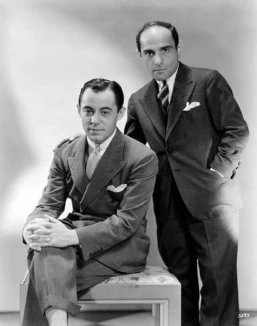

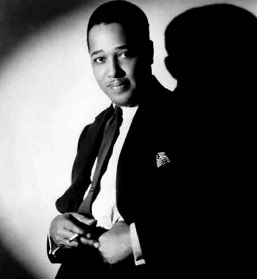


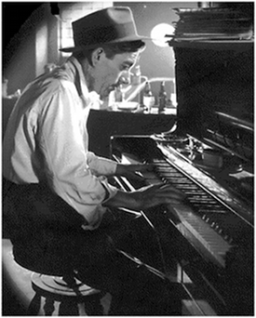
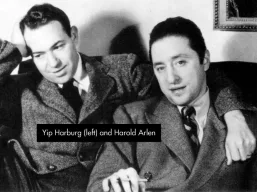




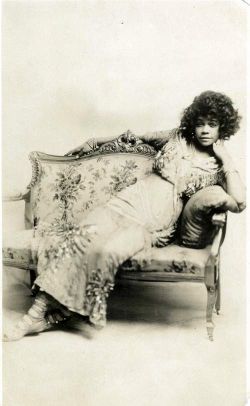










Sep 11, 2010 @ 20:36:16
Blue Butterfly. Two year old, Maria loves and her Grandpa Mike plays the uke. Would like to find Chords to this delight.
LikeLiked by 1 person
Sep 11, 2010 @ 22:15:28
Hi Michael, I’ll try to help. First, I gave the wrong songwriters previously. Blue Butterfly was written by Johnny Tucker/Joe Schuster, according to ASCAP’s ACE title search and the Milne Special Collections at the UNH Library, as well information found on a JG compilation released in France called Classiques et inédits (Classic and Unpublished). UNH gives the copyright date as 1929 and the publisher as M. Whitmark & Sons. ASCAP, however, provides the following address under “Publishers/Administrators”
WARNER BROS INC (WARNER BROS MUSIC DIV)
(WARNER BROS MUSIC DIV) % WARNER CHAPPELL MUSIC I
10585 SANTA MONICA BLVD
LOS ANGELES, CA, 90025
Tel. (310) 441-8600.
I seldom search for sheet music so I wouldn’t really know where to look. There are links to a number of sheet music sites listed in my sidebar; I’ve accumulated these while searching for sheet music covers. If I do find the sheet music by some coincidence I will certainly forward it to you. Good luck. — Jim
LikeLike
Oct 19, 2010 @ 14:43:35
Thank you Jim. I love your site.
LikeLiked by 1 person
Oct 20, 2010 @ 12:51:00
Thanks, Michael
LikeLike
Aug 22, 2013 @ 21:37:49
awesome site! thanks for all of the effort you put in to it
LikeLiked by 1 person
Aug 23, 2013 @ 15:31:12
Thanks, emmie. So kind of you.
LikeLike
Dec 02, 2014 @ 16:13:21
i love all of it Judy and her sisters were so talented
LikeLiked by 1 person